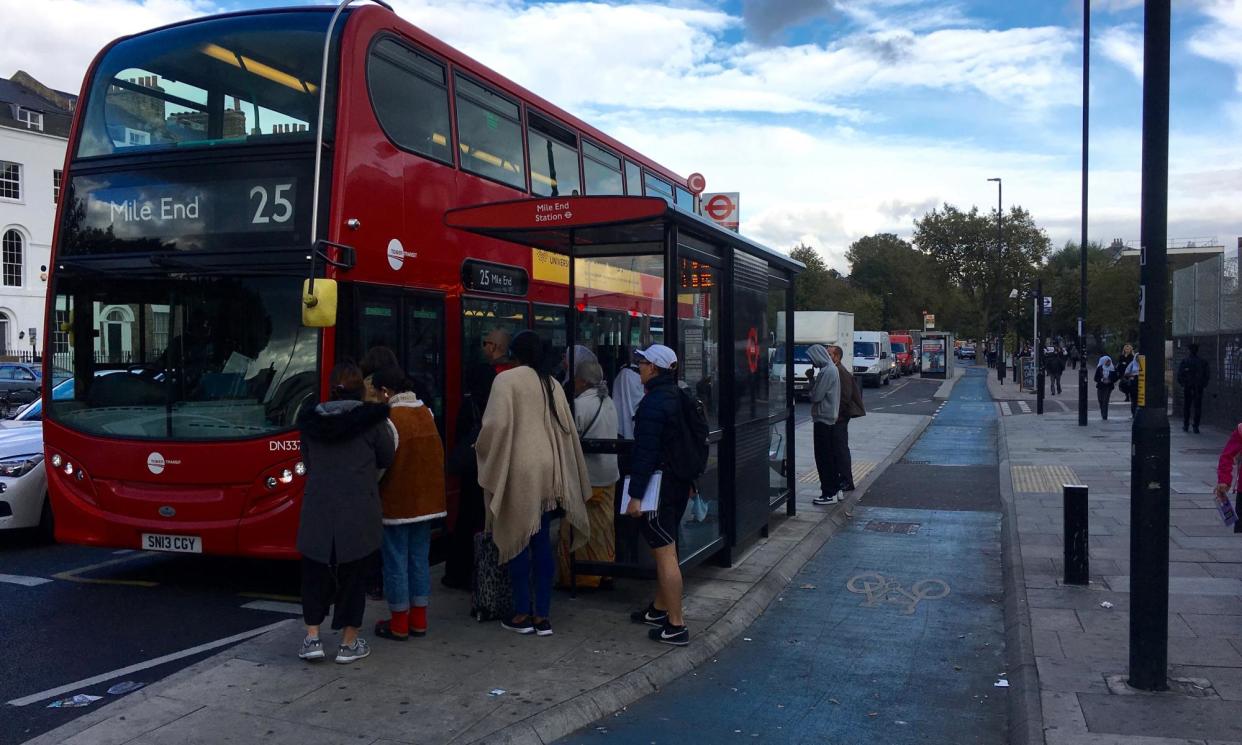Transport secretary considers ban on floating bus stops in UK cycle lanes

Ministers are considering banning a standard design feature for cycle lanes, the Guardian has learned, in a move campaign groups warn could make building separated bike routes on many main roads in effect impossible, and put riders at risk.
Mark Harper, the transport secretary, is examining whether there should be a halt in the use of what are known as floating bus stops, where a segregated bike lane is routed behind a bus stop and passengers cross the cycle lane to reach it.
These have been used very widely in other European countries for years, and in some UK cities for more than a decade. They allow cyclists to keep out of the way of buses, which regularly pull in and out, which makes the routes safer, and the bike lanes are more likely to be used by children and less confident cyclists.
However, there has been criticism of the design of some of the UK examples – especially in London – saying they make using buses intimidating and sometimes dangerous for blind people.
The National Federation of the Blind UK (NFBUK) has campaigned strongly for the design, also known as bus stop bypasses, to be entirely banned. Harper recently met the charity and is understood to be sympathetic to the idea.
The prospect of a ban has alarmed active travel groups, who say this could make it impossible to build safe bike lanes on the many main roads that have bus routes running along them.
There is also some doubt about the safety case for a ban. In London, which has the highest number of floating bus stops in the UK, statistics for 2020-22 showed that of 623 pedestrians injured after being struck by a bike, 0.6% of them – four in all – were hit at floating bus stops. None of these incidents appeared to have happened at a designated crossing point.
Over the same period, 11,400 pedestrians and 15,000 cyclists were injured after being hit by motor vehicles.
There is also a complication for such schemes in London, given they are the responsibility of Transport for London (TfL), not the Department for Transport (DfT).
A DfT source said Harper took the concerns of groups such as the NFBUK very seriously, in part as he had formerly served as minister for disabled people and had held the same role as a shadow minister for three years.
The UK’s biggest charity for blind people, the RNIB, has not called for a ban on floating bus stops, although it says they should be avoided if there is an alternative, and when built should be as safe as possible, for example with tactile paving and a very obvious crossing point.
The NFBUK argues that the RNIB has “lost their way on this issue”, and that floating bus stops are “a chaotic, confusing and disorienting space” for blind and partially sighted people. It says cyclists can overtake buses when they pull in, or wait behind them while they are stopped.
A ban would risk being seen as another attack by the government on active travel in the wake of earlier plans to prioritise the needs of drivers over those of cyclists and pedestrians, with a clampdown on 20mph limits, bus lanes, low-traffic neighbourhoods and the ability of councils to fine drivers who commit offences.
The campaign group Cycling UK said that while it accepted some existing floating bus stops were not designed well enough, and that a perception of danger was important as well as casualty statistics, the solution was to improve designs and to liaise with disabled people and charities, not a ban.
Duncan Dollimore, the head of campaigns, said: “Bus stop bypasses are needed to separate cyclists from motor traffic on some roads which include bus routes and cycle routes, to create continuous cycle tracks which enable more people to cycle safely, enabling them to live healthier, happier, and greener lives.
“But we must ensure this is done in cooperation with people with disabilities, whose needs must be fully considered in the design process.”
A DfT spokesperson said they could not comment on speculation, adding: “While TfL are responsible for these schemes in London, we expect local authorities to engage with disability groups and follow our guidance which clearly sets out that all infrastructure designs should be accessible for everyone.”


